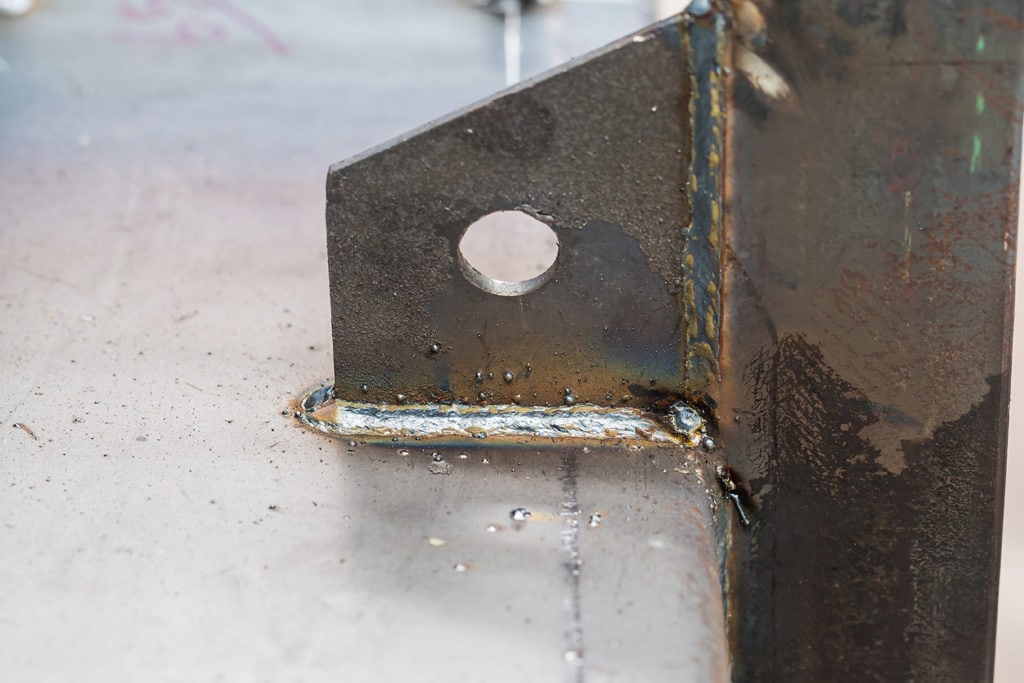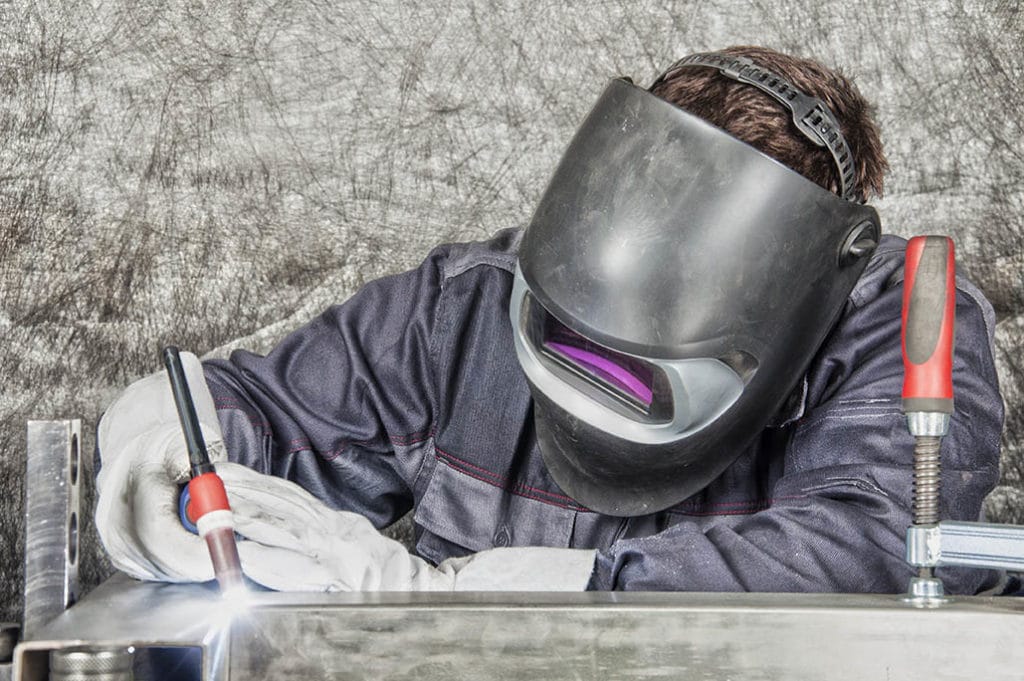How to Reduce Spatter When MIG Welding – A Complete Guide
Last Updated on

The word ‘spatter’ is familiar to all welders, just as it is frustrating. If you’ve never found yourself glaring at tiny molten metal blobs around your weld after a harrowing welding experience, then you are yet to be introduced to the bare skeletons. Should these spatters fall on you, they will burn through to the skin.
Causes and Solutions to Spatter in MIG Welding
In order to reduce spatter, you must first understand the causes. In MIG welding, the molten droplets appear around the welding arc and outside the welding puddle. When using the MIG method, spatter formation is inevitable. Your focus should be on how to reduce their appearance.
1. Metal Type
Every weldable metal has different features and compositions that react differently when exposed to heat. These features will determine the amount of spatter that occurs during welding. If some metal components do not support weldability, using such material will leave you with spatter and a substandard end product.
Ensure the metal you have has properties that will limit and/or reduce spatter. Also, if they have a coating, put that aspect into consideration to determine its effect on the welding process.

2. Machine Setting
Sometimes a single oversight when setting machines is enough to create spatter. Be easy on yourself because even the best of welders experience such mistakes. A case in point is, forgetting to change polarity when shifting from flux-cored to solid wire, especially when MIG welding rough arcs.
Also, do not set the speed and voltage too fast because such actions trigger spatter. The secret is to use a smooth and stable arc.
Guidelines on Setting the Machine
Since welding machines vary in material and conditions, physically assess and adjust the settings to suit your project’s demands.
- Setting the voltage according to the manual or relying on your experience. If you manage to get the arc right, you do not need to alter the settings.
- Setting the wire speed and consistently adjusting it to achieve a smooth arc.
- In case you are not satisfied with the arc even after setting the wire speed range, change the coarse voltage setting. Proceed to redo the second step to ensure the arc is more stable.
- With a stable arc, you can adjust the gun travel speed or the wire feed speed if necessary.
3. Cleaning Welding Materials
Impurities like mill-scale, paint, rust, and grease reduce the weld’s quality, encouraging spit and spatter. Cleaning the workpieces and surfaces is a mandatory step to minimize splatter and prevent re-dos. Store the wire spool in a clean environment because it can also cause contamination.

4. Improving Welding Techniques
Ensure the shielding gas covers the weld zone sufficiently by holding the gun vertically at angles not exceeding 20°. A wider gun angle can imbalance the shielding gas’s spread by pushing most of it to one side while leaving other areas exposed. CO2 and argon are the frequently used shielding gas in the MIG method. Though CO2 is cheaper and enables deep penetration, it produces more spatter compared to argon.
Using a short electrode stick-out is recommended since it’s less likely to get into the weld pool. In MIG welding, use a stick-out of ⅜-inch.
5. Using the Right Equipment
Fortunately, the most prevalent causes of spatter are usually easy to fix, like using the right equipment.
- Check out for wire problems
- Adjust the work clamp
- Have a shielding gas
- Wear the right contact tips
FAQs
Is weld spatter a defect?
Every welding project has to follow specific guidelines. If the spatter during welding exceeds the limits indicated in the policy, then the spatter becomes a defect. Generally, spatter is a normal encounter in welding.
What is anti-spatter spray?
The spray prevents the spatters formed during welding from sticking on the working surfaces. It has an ingredient that inhibits spatter from sticking.
Why are my welds not penetrating?
Several factors can cause this situation. However, they boil down to adequate preparation and cleaning before welding commences. Failure to clean the base metals will hinder proper penetration and also make the bead porous.
Conclusion
Spatter is the most rampant challenge all welders can relate to. In summary, to reduce spatter in MIG welding, maintain cleanliness, use the right welding technique, feed proper machine setting, and use the right equipment.
Even though the weld’s integrity is usually not affected, the causative agent may compromise the weld’s strength. The final product will also be aesthetically displeasing. Through constant practice, you will be encountering spatter within manageable limits.
Featured Image Credit: Image Credit: Matee Nuserm, Shutterstock
